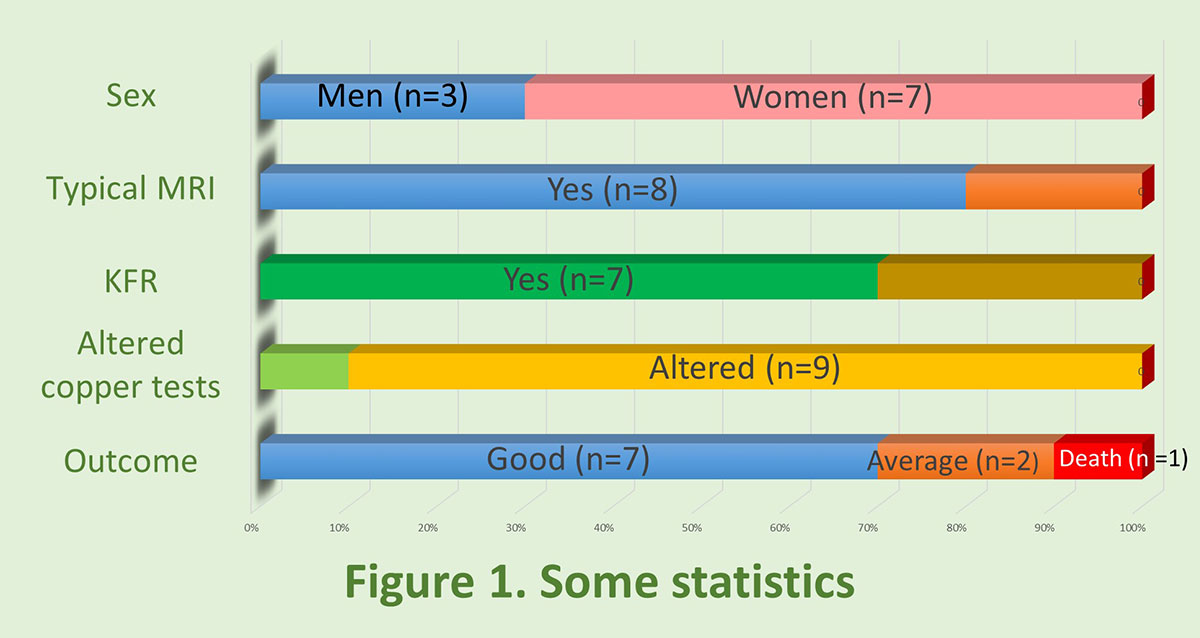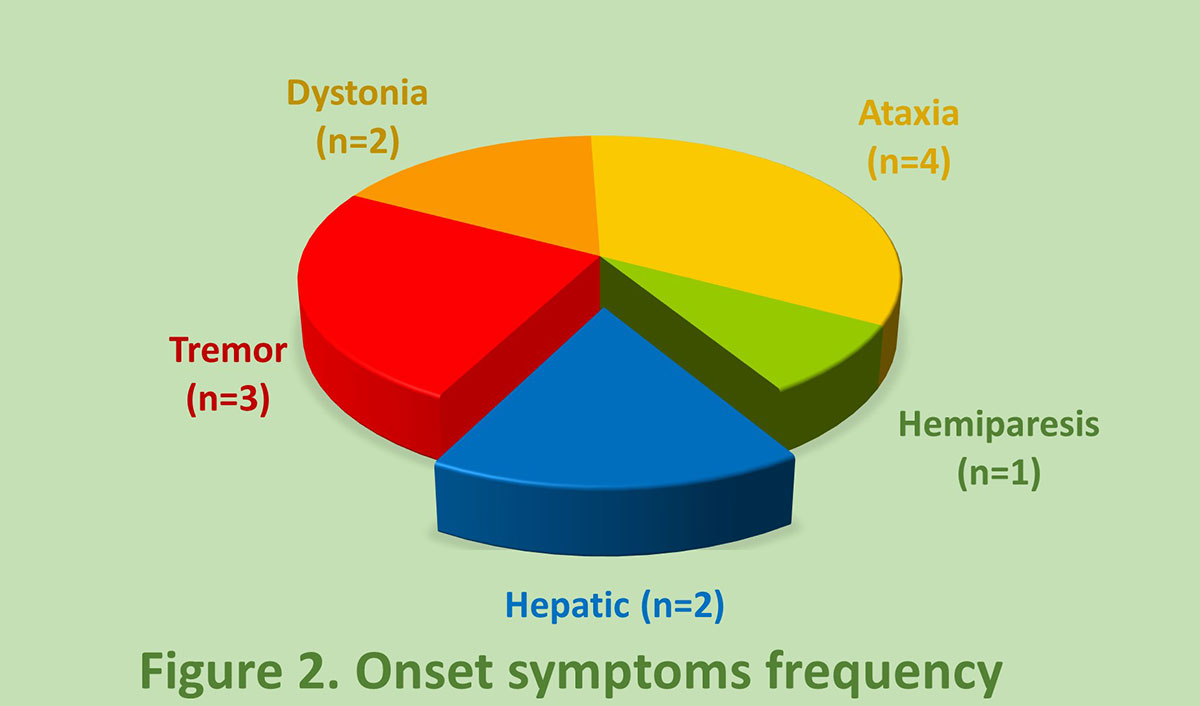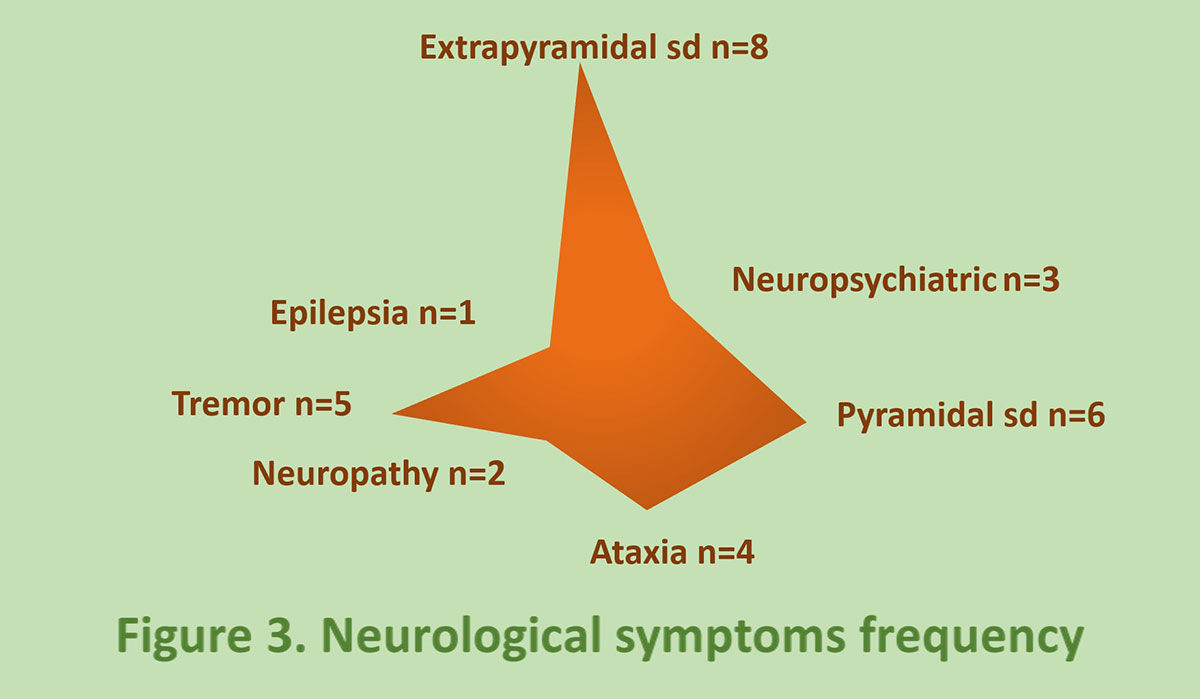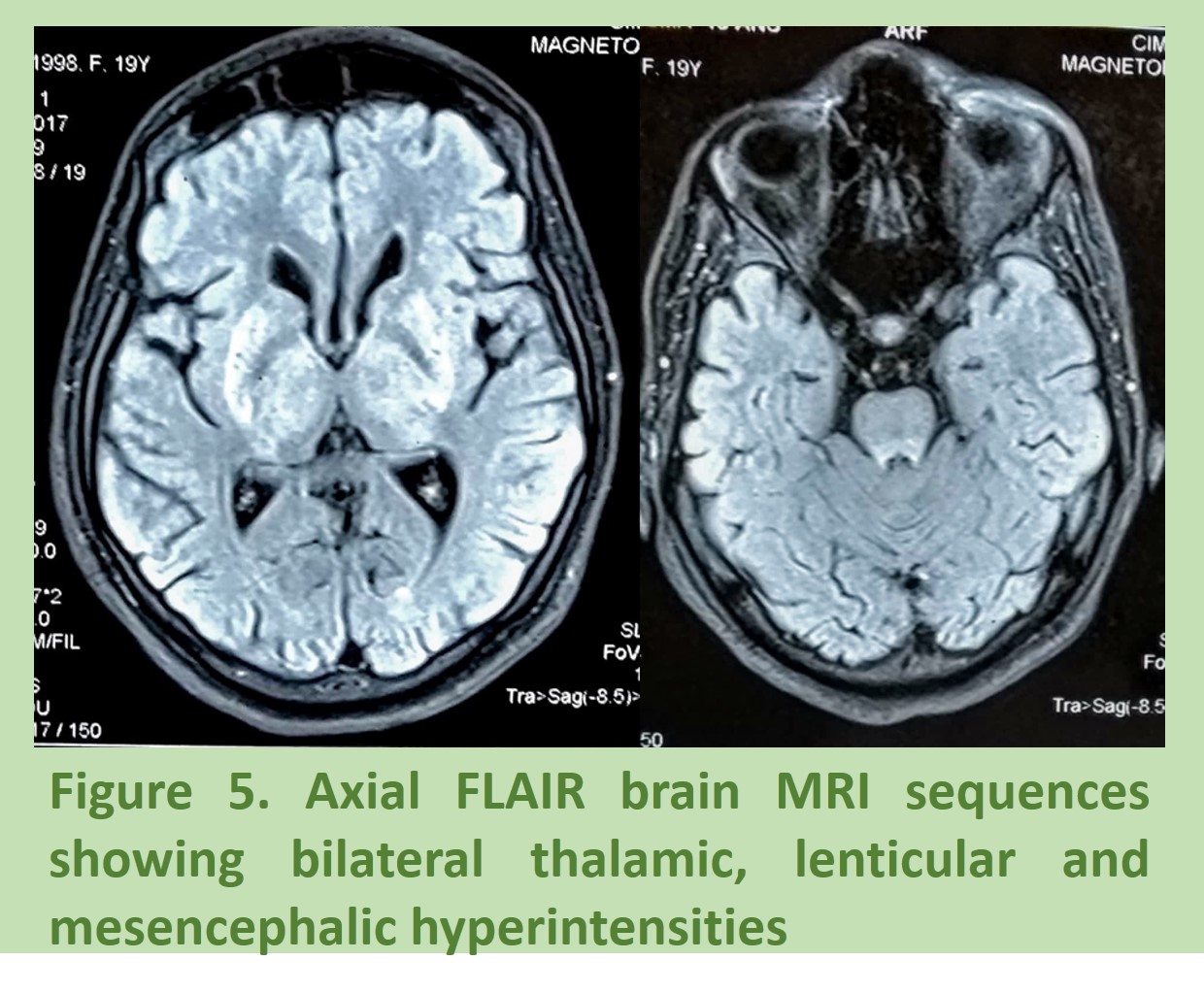Session Information
Date: Monday, September 23, 2019
Session Title: Rare Genetic and Metabolic Diseases
Session Time: 1:45pm-3:15pm
Location: Les Muses Terrace, Level 3
Objective: Describe the clinical aspects and evolution in 10 patients with neurological Wilson’s disease (NWD).
Background: Wilson’s disease (WD) is a rare autosomal recessive metabolic disorder caused by mutations of the ATP7B gene resulting in a multisystemic copper accumulation [1]. Hepatic onset occurs in childhood and is earlier then neurologic onset [2]. WD has an important genotypical (more than 600 mutations) [4] and phenotypical heterogeneity [3]. The diagnosis involves a clinical examination, copper tests, and neuroimaging and is confirmed by genetic testing. The prognosis depends on early treatment by copper chelators.
Method: A retrospective, observational study of 3 men and 7 women from 8 different families with NWD for a mean duration of 3.7 years.
Results: The average age of onset was 16.2 years and for diagnosis was 18.2 years [figure1]. Hepatic impairment was present in four cases, revealing the disease (n=2) or occurring afterward (n=2). In eight cases, the onset was neurologic by tremor (n=3), cerebellar syndrome (n=2), dystonia (n=2) or hemiparesis (n=1) [figure2].With WD progression, all patients had neurological symptoms [figure3]. Movement disorders were the most common (n=8) with oromandibular dystonia (n=4) [figure4], attitude and action tremor (n=4), distal dystonia (n=3), rest tremor (n=1) and chorea (n=1). Kayser-fleischer ring (KFR) was present in 7 cases. Copper tests were altered in 90% of patients. Brain MRI showed a symmetrical hyperintensity in basal ganglia on T2-weighted sequences in 80% of patients [figure5].We used D-penicillamine as a chelating treatment with maximum doses obtained gradually to avoid neurological worsening than decreased to a maintenance dose. The outcome was favorable in 7 cases, average in 2 cases and lethal in one cases; The treatment of dystonia by botulinum toxin in 2 cases was very effective.Our study is consistent with the literature findings regarding the age of onset, brain MRI the variability in clinical presentation and copper tests. However, KFR, hepatic onset, therapeutic and hepatic complications were less frequent.
Conclusion: Wilson’s disease is a deadly but treatable condition that should be considered in all young patients presenting any movement disorder, parkinsonism or any chronic hepatopathy of undetermined etiology [5] to allow early treatment and better prognosis. This abstract was presented in the 12th Maghrebin congress of neurology, December 2018, Marrakech.
References: [1] Woimant F, Trocello JM. Disorders of heavy metals. Handbook of Clinical Neurology 2014;120:851—64. [2] Litwin T, Gromadzka G, Członkowska A. Gender differences in Wilson’s disease. J Neurol Sci 2012;312(1—2):31—5. [3] A. Poujois, P. Chaine, F. Woimant, La maladie de Wilson en 2018, Pratique Neurologique – FMC, Volume 9, Issue 3, 2018, Pages 173-185. [4] Stenson PD, Mort M, Ball EV et al. (2014). The Human Gene Mutation Database. Hum Genet 133 (1): 1–9. [5] El-Youssef M. Wilson disease. Mayo Clin Proc 2003;78:1126–36.
To cite this abstract in AMA style:
Y. Mecheri, F. Serradj, A. Boulefkhad, H. Semra, A. Mzahem, A. Hamri, Y. Sifi. Neurological Wilson Disease: Clinical Aspects and Evolution in 10 Cases [abstract]. Mov Disord. 2019; 34 (suppl 2). https://www.mdsabstracts.org/abstract/neurological-wilson-disease-clinical-aspects-and-evolution-in-10-cases/. Accessed December 15, 2025.« Back to 2019 International Congress
MDS Abstracts - https://www.mdsabstracts.org/abstract/neurological-wilson-disease-clinical-aspects-and-evolution-in-10-cases/





